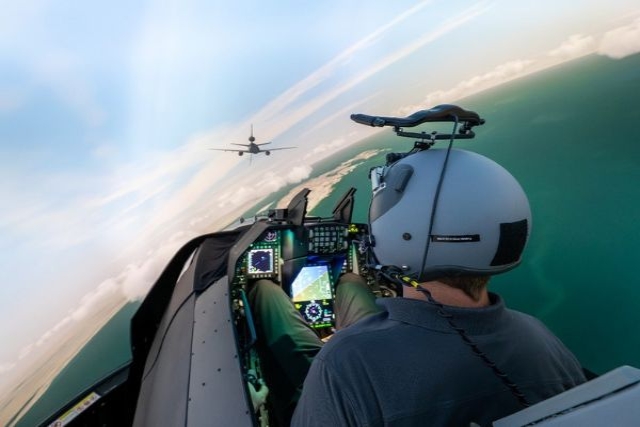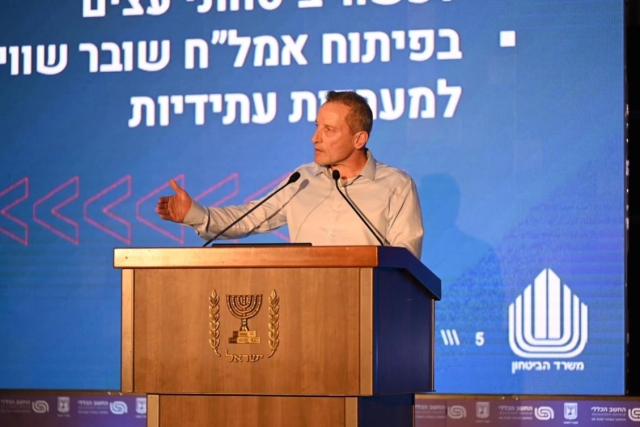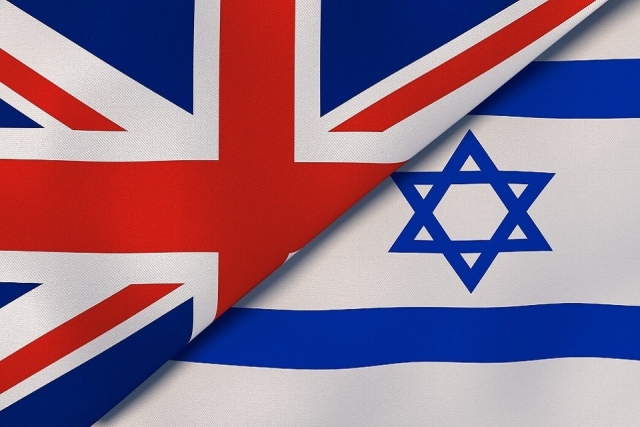The UK Agile Thunder Program- A Demonstration of Network Enabled Capability

Agile_thunder_schematic_diagram
The UK Agile Thunder program is an air/land network that provides dynamic, scaleable IP-like capability with existing communication systems, improves near real-time exchange and accessibility of INTEL products while maximizing the use of current equipment. A fascinating presentation on the project demonstration was made at the Network Centric Warfare (NCW) 2008 conference by Sq. Ldr. Tim Monk of the RAF. Excerpts from the presentation are reproduced below.
DW : AGILE THUNDER AIMS
-: Improve near real-time exchange of INTEL products. Improve warfighters’ access to those products. Create a data/comms network that is self-forming, scaleable and interoperable. Provide new capabilities while maximising use of current equipment. Using available technology that can be rapidly fielded
DW : AAGILE THUNDER –WHY?
-: UK’s Defence Industrial Strategy. Greater cooperation between MoD and Industry. Partnership to develop emerging technology. Shared understanding of the war fighter’s needs.
DW : AGILE THUNDER linked to Network Enabled Capability (NEC)
-: NEC is about the coherent integration of sensors, decision-makers, weapon systems and support capabilities to achieve the desired effect. It will enable us to operate more effectively in the future strategic environment through the more efficient sharing and exploitation of information within the UK Armed Forces and with our coalition partners. The bottom line is that it will mean better-informed decisions and more timely actions leading to more precise effects…
DW : AGILE THUNDER Challenges
-: Share real-time video and data beyond the line of sight within the tactical battlespace. Improve the overall situational awareness/communication down to the squad level.
DW : Concept of Operations
-: Two phases:. -Technical Phase (Dec 06 – 23 Oct 07). Liaison between Industry and MoD. Ground and airborne network test and development in UK and USA. Culminated with full participant airborne test on 22 Oct 07. -Operational Phase (24-26 Oct 07). Close Air Support. Time Sensitive Targeting. Non-Traditional ISR. Real Time Targeting/Strike.
DW : MoD and Industry Partners
-: -Air Warfare Centre (AWC). -Land Warfare Centre (LWC). -DEC ISTAR. -Joint Air Land Organisation. -Defence Equipment and Support.
DW : Air Assets
-: -RAF Kinloss (Nimrod MR2). -RAF Lyneham (C-130J). -41(R) Sqn (Tornado GR4).
DW : Ground Assets
-: -3 Sqn RAF Regt. -626 TAC(P) - FAC. -TCW - 90 Signals Unit.
DW : Industry
-: -Northrop Grumman. -Cubic. -Digital Fountain. -ECS. -Harris. -L3 Communications. -Qinetiq.
DW : Agile Thunder Addressed
-: -Need the capability to interconnect airborne network participants with ground units. -Insufficient capability to ensure the exchange of tactical information and collaboration necessary for optimum execution during combat operations. -The ability to operate in a joint and coalition environment remains lacking. -Need to enable interoperability with only modest modifications to the existing system (to the maximum extent preserve current infrastructure, minimize impact to 8 lines of development).
DW : Advanced Information Architecture (AIA)
-: -Provides ability to metadata-tag and catalogue digital imagery and multi-source intel. -Provides efficient search and retrieval mechanism. -AIA network is self-forming, scaleable, and interoperable. -Supports real-time collaboration (VoIP, Chat, White Board). -Incorporates non-traditional ISR sensors and intel into C2 Processes. -Supports dynamic planning and execution at the tactical Level. -Range is extended beyond LOS by multiple airborne nodes in the “constellation”. -Data stored in airborne and/or ground servers is accessible via relay. -Nodes can enter or leave network easily; every airborne asset can be a node. -Operates over narrow-band (16Kb) or wide-band (Ku).
DW : AGILE THUNDER Functionally
-: -Motion Video. -Whiteboard overlay on image. -Storage, cataloguing and retrieval of imagery and data. -JChat/MirChat. -Email with File Transfer. -Blue Force ID of network participants (PPLI). -Sensor Footprint Display. -Voice over IP. -Reach-back to existing IT networks.
DW : Agile Thunder expected results
-: -Shorten kill chain. -Early collaboration. -Rapid approval of tgt pack. -Rapid and unambiguous dissemination of tasking. -Significant enhancement of warfighter SA. -Access to NTISR and recorded data. -FMV to more users and irrespective of downlink. -Support from rear echelons to ‘push’ processed, relevant product. -Chat/Imagery/Blue force PPLI reduce possibility of collateral damage and fratricide. -Auto-population of positions from designator to cockpit systems removing potential for erroneous input.
DW : Land Forces
-: -Soldier on ground has access to any sensor in network. -Rapid approval of target pack/conops via chat and whiteboard collaboration with HQ. -Clearer picture of friendly positions. -Reach-back to J2 support.
DW : Shared Situational Awareness
-: Nimrod MR2 imagery provided to Land Forces. -Cloud cover below MR2 hard deck obscures target. -Ground Cdr accesses stored MR2 image for planning. -Tgt pack passed to other units and approved by JOC. -GR4 TIALD pass below cloud confirms target. -Target engaged.
DW : Summary
-: -Northrop Grumman’s Advanced Information Architecture demonstrated the ability to improve shared situational awareness and shorten the kill chain. -NEC must link existing resources with new technology to maximise benefit to warfighter. -Provision of timely, relevant product rather than swamping with vast amounts of raw data.
DW : To know more about NETWORK CENTRIC WARFARE-NCW EUROPE 2009
-: Please fill in the form below.










